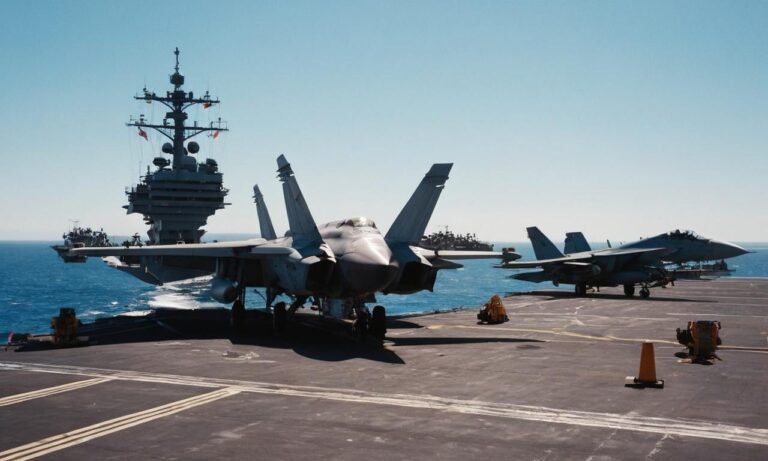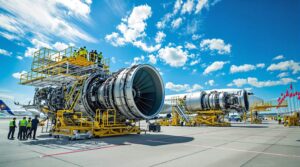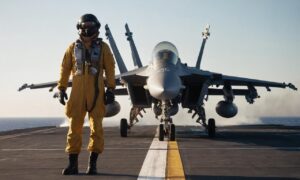When it comes to the formidable presence of an aircraft carrier, the number of planes it can accommodate is a crucial factor in assessing its operational capability. These floating airbases play a pivotal role in modern naval warfare, projecting power across vast oceans and ensuring air superiority. Let’s delve into the intriguing question: How many planes can an aircraft carrier carry?
The Evolution of Aircraft Carriers
Throughout history, aircraft carriers have undergone significant transformations, adapting to advancements in aviation technology and strategic requirements. The early carriers, like the USS Langley commissioned in 1922, could carry a modest number of biplanes. However, as technology progressed, so did the capacity and capabilities of these maritime giants.
Varied Capacities Across Classes
Aircraft carriers come in different classes and sizes, resulting in varying capacities for aircraft. The Nimitz-class carriers, for instance, are renowned for their expansive flight decks and can typically carry around 60 to 90 aircraft, including a mix of fighter jets, reconnaissance planes, and helicopters.
On the other hand, smaller carriers, like the Wasp-class, have a more limited capacity, accommodating around 20 to 30 aircraft. The number is influenced not only by the size of the flight deck but also by the carrier’s design and intended role in naval operations.
Role-Specific Configuration
The composition of aircraft on an aircraft carrier is not arbitrary; it is meticulously planned based on the carrier’s designated mission. Carriers can carry a combination of fighter aircraft for air defense, reconnaissance planes for intelligence gathering, and support aircraft for logistics and search-and-rescue operations.
The need for versatility in naval operations has led to the development of multi-role aircraft, capable of performing various functions. This adaptability allows carriers to optimize their aircraft complement according to the demands of specific missions.
Technological Advancements
Advancements in aviation technology continue to impact the capabilities of aircraft carriers. The introduction of fifth-generation fighter jets, such as the F-35C Lightning II, brings enhanced stealth and versatility, further augmenting the capabilities of carriers. These technological strides also impact the number and types of aircraft a carrier can effectively operate.
Global Variations
Not all nations possess aircraft carriers, and those that do may have different strategies and priorities in their naval forces. The number of planes on an aircraft carrier can vary significantly between countries, reflecting geopolitical considerations, budget constraints, and regional security dynamics.
In conclusion, the number of planes on an aircraft carrier is a multifaceted aspect that depends on various factors, including the carrier’s class, design, and intended mission. As technology continues to advance and geopolitical landscapes evolve, the capabilities of aircraft carriers will undoubtedly undergo further refinements.
Frequently Asked Questions
Curious minds often have additional questions about aircraft carriers and their capabilities. Here are some frequently asked questions to provide a more comprehensive understanding.
How is the Capacity of an Aircraft Carrier Determined?
The capacity of an aircraft carrier is determined by its design, size, and class. Larger carriers with expansive flight decks can accommodate more aircraft, while smaller carriers have more limited capacities. The carrier’s intended mission also plays a crucial role in defining its aircraft complement.
What Types of Aircraft are Typically Found on Carriers?
Aircraft carriers are equipped to carry a diverse range of aircraft, including fighter jets, reconnaissance planes, and helicopters. The specific mix depends on the carrier’s role in naval operations. Some carriers may prioritize air defense, while others focus on intelligence gathering or logistical support.
How Do Technological Advancements Impact Aircraft Carrier Capabilities?
Technological advancements in aviation, such as the development of stealthy fifth-generation fighter jets like the F-35C Lightning II, have a significant impact on an aircraft carrier’s capabilities. These advancements enhance the carrier’s versatility and influence the types of aircraft it can effectively operate.
Regional Disparities in Aircraft Carrier Capacities
It’s important to note that the number of planes on an aircraft carrier can vary globally. Different nations have varying strategies and priorities when it comes to their naval forces. This creates regional disparities in aircraft carrier capacities, influenced by geopolitical considerations, budget constraints, and specific security dynamics.
Environmental Considerations
Environmental factors also play a role in determining the number of planes on an aircraft carrier. The carrier’s operational range, weather conditions, and the need for maintenance impact its aircraft-carrying capacity. These considerations are crucial for ensuring the effective deployment and sustained operation of carrier-based aircraft.






